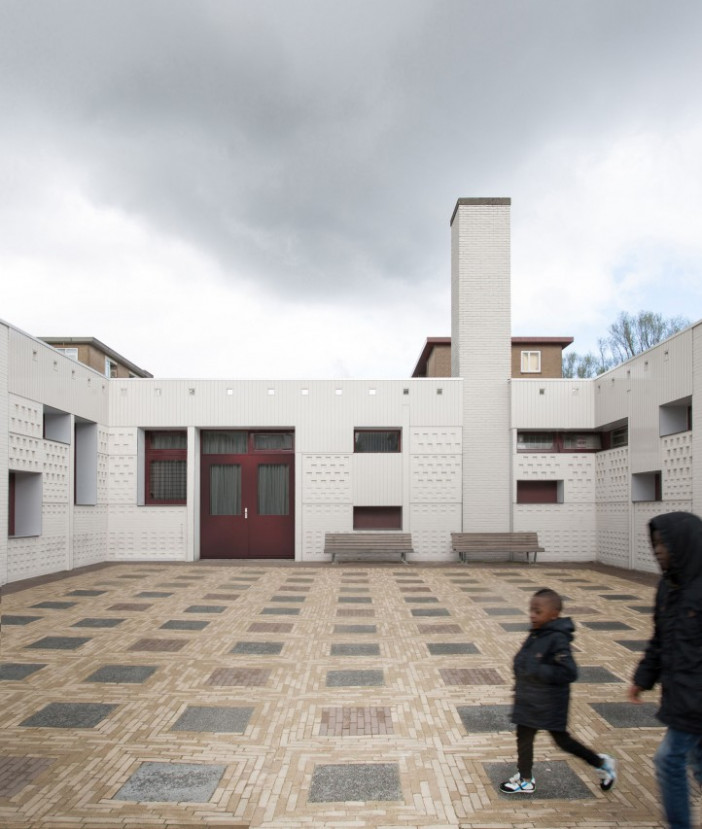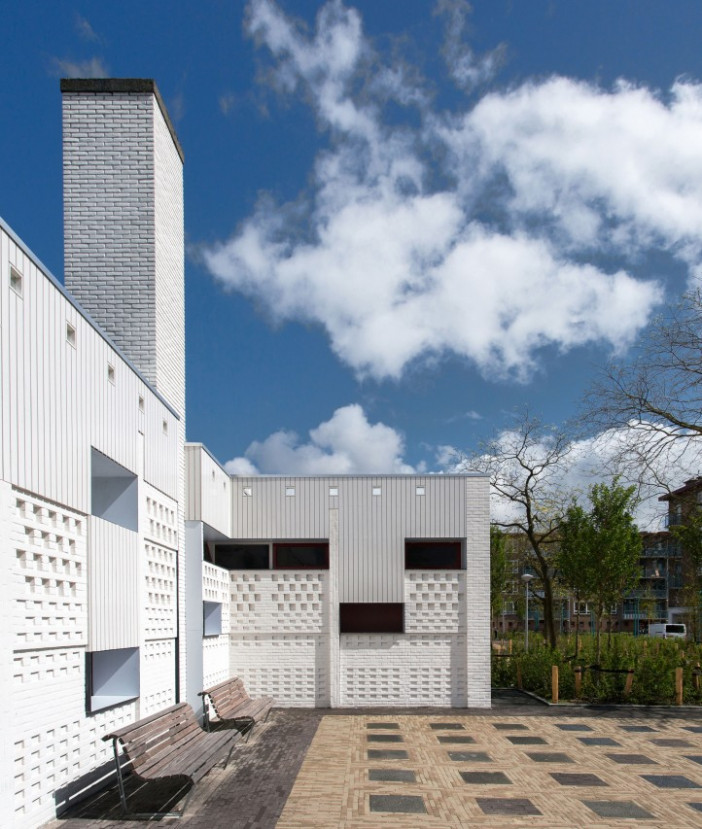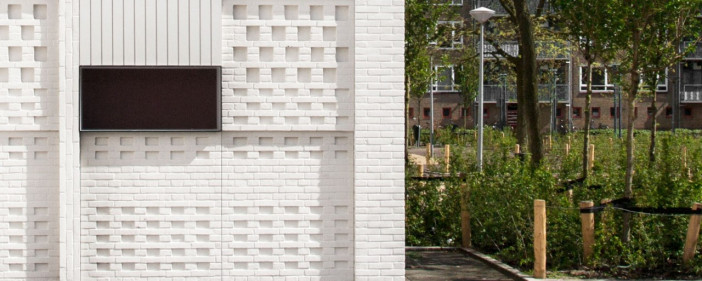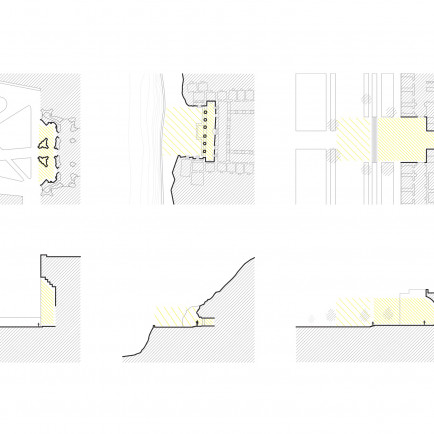Mevlana mosque Amsterdam
Urban and Architectural
Due to the limited budget the architecture decided to concentrate the budget on two architecturally sound interventions at the entrance zones. These areas connect the building with the public space and the surrounding neighbourhood. It is in this way not a frivolous, diluted update of the entire building, but a local upgrade.
The entrance squares have two functions. First, they offer space for activities; the monotonous public space around the building is divided into designated areas for sports and social activities. Secondly, they form the transition from the busy public space to the intimate mosque interior. An analysis of religious buildings and their public spaces formed the basis for the design of the new squares. They are securely enclosed on one side by high recessed niches and loosely enclosed by low hedges on the other side.
Much attention was paid to the surface and texture of the stone facades that encompass the entrance squares. The tall building slabs of the post-war urban layout have little detail and the spaces between the buildings are very large and rough. The mosque stands now out with its clear white entrance facades, enrichened with changing brick textures, patterns and reliefs that support the cultural function of the building. This high-quality intervention sets a standard for future preservation phases and by this guarantees a durable public future for the existing building.
Description
A large number of public amenities located on the periphery of Dutch cities are in decline due to the changing demands of local inhabitants. The transformation of a school into a mosque in Amsterdam is an exemplary project to this wider issue.
Details
Location
Baas Gansendonckstraat 2, 1061 DA Amsterdam
Architect Name
Year of Build
2013
Area
600
Drawings
Map
Urban and Architectural
Due to the limited budget the architecture decided to concentrate the budget on two architecturally sound interventions at the entrance zones. These areas connect the building with the public space and the surrounding neighbourhood. It is in this way not a frivolous, diluted update of the entire building, but a local upgrade.
The entrance squares have two functions. First, they offer space for activities; the monotonous public space around the building is divided into designated areas for sports and social activities. Secondly, they form the transition from the busy public space to the intimate mosque interior. An analysis of religious buildings and their public spaces formed the basis for the design of the new squares. They are securely enclosed on one side by high recessed niches and loosely enclosed by low hedges on the other side.
Much attention was paid to the surface and texture of the stone facades that encompass the entrance squares. The tall building slabs of the post-war urban layout have little detail and the spaces between the buildings are very large and rough. The mosque stands now out with its clear white entrance facades, enrichened with changing brick textures, patterns and reliefs that support the cultural function of the building. This high-quality intervention sets a standard for future preservation phases and by this guarantees a durable public future for the existing building.
Description
A large number of public amenities located on the periphery of Dutch cities are in decline due to the changing demands of local inhabitants. The transformation of a school into a mosque in Amsterdam is an exemplary project to this wider issue.








